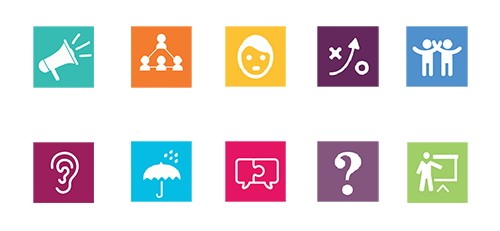
Every project, you are working on, has several stakeholders: people being affected by the outcome of the project, or in a position to affect that outcome. To improve the chances of successful project completion, increase understanding of progress, prevent certain risks you need to engage with stakeholders. In this article, I will share how to do that with little effort.
Effective stakeholder engagement (and management) skills are a solid addition to your soft skills portfolio. They rely on your interpersonal skills: taking initiative, integrity, honesty, collaboration, respect, empathy, and confidence. These skills are required to work with other people effectively.
Stakeholder Engagement is the systematic identification, analysis, planning and implementation of actions designed to influence stakeholders. A stakeholder engagement strategy identifies the needs of key groups and the sponsor plays a vital role in ensuring those business needs are met.
— APM Body of Knowledge
The goals of Stakeholder engagement are:
- to gain stakeholder approval and support;
- to minimize their opposition and satisfy their needs as far as possible;
- to anticipate what human risks and opportunities might arise;
- to enable plans to be laid and managed.
Your first step on a journey of Stakeholder engagement should be identifying the stakeholders. Stakeholders may come and go throughout the life cycle of the project. Important factors to identify are stakeholders’ interest, influence and view about a project. Try to understand stakeholders’ interests, concerns and rights. You need to address them.
Stakeholder Analysis is of great value when it is used to shape how the work is planned, delivered and governed.
— PMBOK Guide 7th edition
Communication is a key part of Stakeholder engagement. Often, engagement has to include awareness of the ideas of others, assimilation of others perspectives and shaping of a shared solution. You need solid two-way relationships with the stakeholders.
You need to engage stakeholders proactively to the degree needed to contribute to project success and customer satisfaction. Try not to overdo it. A good idea could be to use stakeholders who support the project to influence stakeholders who do not.
The main tools for collaboration are interactive meetings, face-to-face meetings, informal dialogues, knowledge-sharing activities, project status updates, and forums. You need to choose the right instruments based on stakeholder’s importance and size (number of people).
The results of stakeholder engagement activity are: collected and evaluated information and opinions, shared understanding and alignment. They will be used to tailor the project: minimize potential negative impacts and maximize positive project outcomes.
Recommendations on engaging stakeholders
1. Communicate. Before trying to engage and influence stakeholders you have to understand the people you’ll be working with. Sharing information with stakeholders is important, but it is equally important to first gather information about your stakeholders.
2. Consult early and often. A project may be unclear to stakeholders, especially in the early stages. Regular consultation is essential to ensure that requirements are agreed upon and a delivery solution is negotiated. You need to rely on the acceptance of the majority of stakeholders when making any decisions about the project.
3. They’re only human. Stakeholders don’t always behave in a rational, consistent or predictable way. Try to understand the root cause of stakeholder’s behaviour to maintain a productive relationship.
4. Plan stakeholder engagement. A consistent and measured approach to stakeholder engagement is essential.
5. Build relationships. A relationship with stakeholder results in increased trust. This trust allows people to work together more easily and effectively. Identify relationships between stakeholders and build your own to increase confidence in the project environment and speed problem solving and decision-making.
6. Don’t overdo it. Use your foresight to anticipate hazards, take simple and timely actions with stakeholders. Don’t make a chore out of stakeholder management for you or anyone else.
7. Be aware of risks. Stakeholders are both important and influential, thus they may bring risks to the project. The more stakeholder is engaged in a project – the bigger are the risks. Treat stakeholders as potential sources of both risks and opportunities within the project.
8. Compromise. Establish the most acceptable baseline across stakeholders’ expectations and priorities. Always remember the relative importance of every stakeholder and stick to a weighted hierarchy when deciding on the project requirements.
9. Facilitate the definition of success. Project success can mean a thousand different things. It’s your role to establish a definition of project success shared by the project’s stakeholders.
10. Take responsibility. Stakeholder engagement is the responsibility of every member of the team. Good project governance requires providing clarity about stakeholder engagement roles and responsibilities and what is expected of people involved in the project.